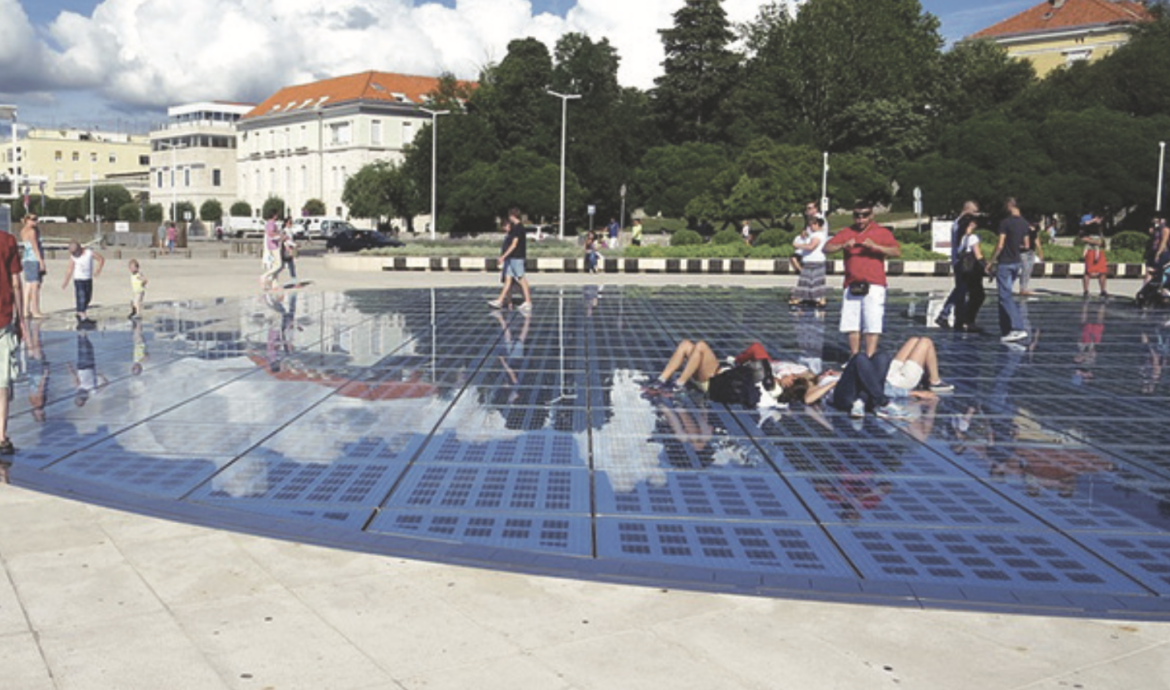
Ever wondered what urban integrated photovoltaics could mean for spaces and infrastructure in Zurich?
On 04.04.2023 by Maximilian GesterBy Maximilian Gester

Maximilian Gester is a Researcher at the Chair of Architecture and Building Systems at ETH Zurich. He works at the Future Cities Lab Global (FCLG) based in Zurich and Singapore, where he is responsible for the techno-economical assessment and prototyping of BIPV solutions (Building Integrated Photovoltaics) in both the Singaporean and Swiss contexts. He is researching on the synergies between architecture and energy, more specifically solar energy.
Based on interviews with stakeholders such as architects, engineers, and the city of Zurich, the article suggests various PV implementations and their benefits at 4 different scales: Bus shelters, Parking lots, Plazas and Bridges.
To make cities not only big energy consumers but also energy producers, solar energy integration, and more precisely PV (Photovoltaics) integration in urban design becomes necessary and aligns with the current political motivations. The carbon emission goals combined with the consequences of the Ukrainian war have never pushed the need for renewable energy production as far as today. When talking about PV integration we distinguish between BAPV (Building Applied PV), where the system is added or attached to the building, and BIPV (Building Integrated PV), where the goal is to replace other functions of a building envelope. While free-standing PV (Photovoltaics) and BIPV (Building Integrated Photovoltaics) are widely acknowledged solutions contributing to increased renewable energy production, the term UIPV (Urban Integrated Photovoltaics) is not heard of frequently. By focusing not on buildings, but rather on the space between them, this article identifies the potential for UIPV in the city of Zurich. How big is its potential? What are the barriers and potential synergies? What could it look like?
The increasing electricity demand of cities and the matching of energy production and consumption justify the high need of solar electricity production in the urban context. However, the PV technology requires more surface area than common electricity production technologies per unit of produced energy. Thus, in urban settings, the requisite surfaces are scarce, resulting in conflicts of usage, such as construction sites or biodiversity preservation areas. To promote the acceptance of Urban Integrated Photovoltaics (UIPV), it is imperative that UIPV systems not only produce electricity but also serve other purposes, such as shading.
The article focuses on 5 common urban objects on different scales to discuss their potential for electricity production and beyond.
- Bus shelters
- Parking lots
- Plazas
- Bridges
- Parks
To assess the potential, we used georeferenced open-source data to identify urban objects within the city. For each scale an integration approach is proposed considering architectural, engineering, environmental and socio-economical aspects. In order to ensure the feasibility of the design suggestions, interviews with stakeholders of the city of Zurich were carried out. These include for example the energy department and the public transportation company VBZ.
Overview
The map below shows the location of the above-mentioned scales in the city center of Zurich. The table and graph sum up the whole PV potential in terms of available surface and theoretical energy production potential.
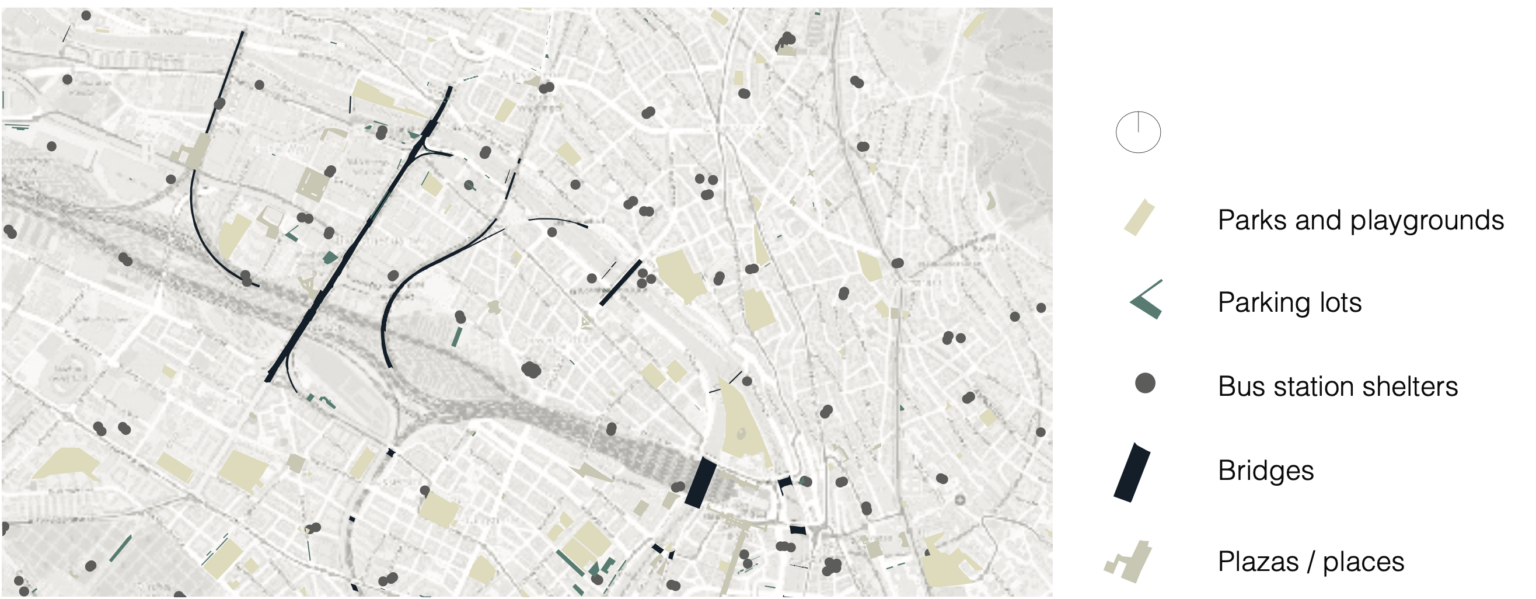
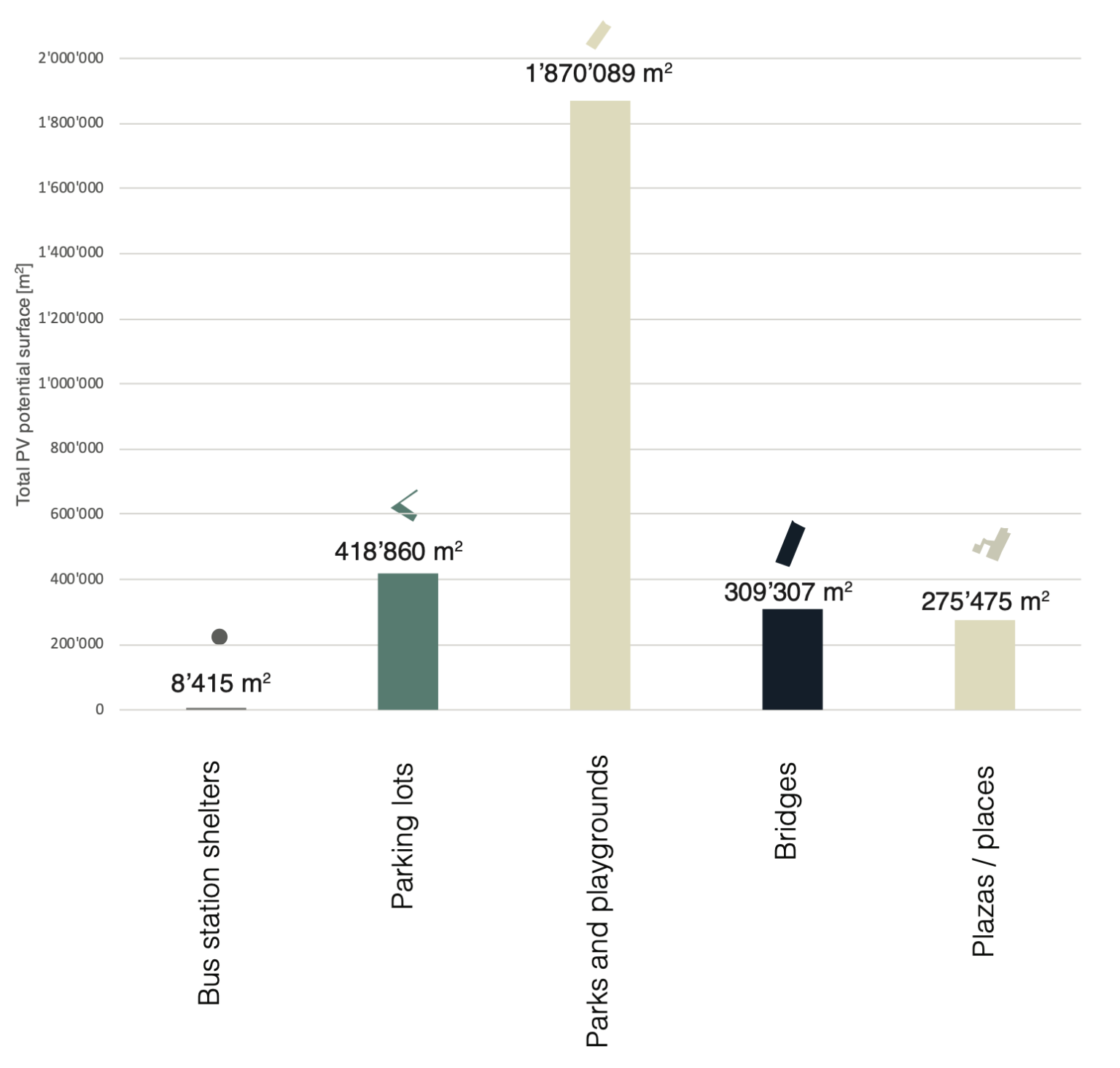
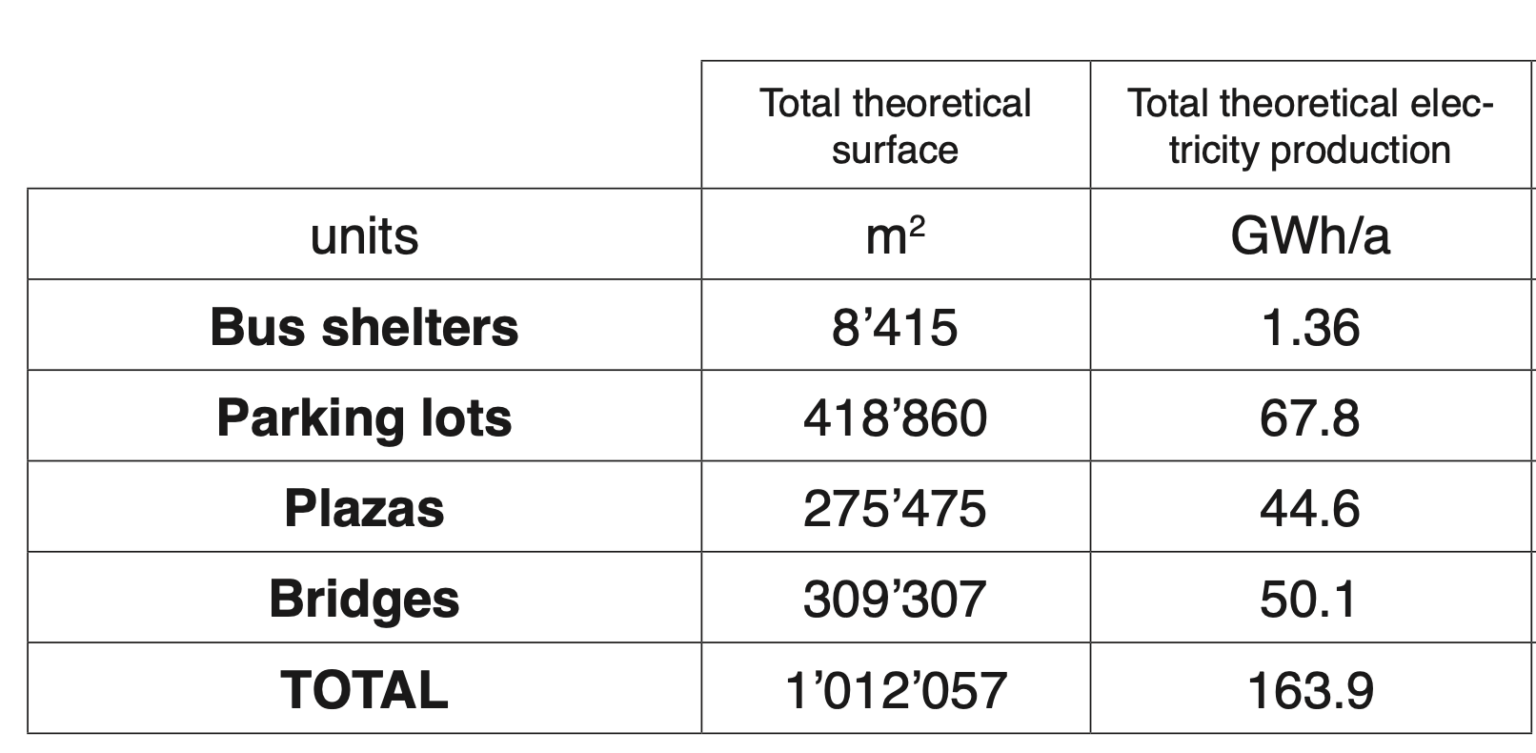
The analysis reveals that park areas in the city of Zurich exhibit a very high potential for PV electricity production. However, integrating PV into park areas presents several challenges, including preserving biodiversity, mitigating tree shading, and addressing social acceptance issues. The results of the conducted interviews with stakeholders confirm that integrating PV into parks would be difficult and unlikely. Consequently, we have decided to exclude parks from further research, leaving us with four remaining urban structures: bus shelters, parking lots, plazas, and bridges. These structures offer promising opportunities for PV integration, and we will now explore them further.
Bus Shelters
The primary objective of integrating photovoltaics (PV) into a bus shelter is to achieve energetic autonomy by providing electricity for lighting, speakers, and advertisement. However, due to their small size, the PV yield of bus shelters is highly dependent on the local shading situation. Thus, each bus shelter must be analyzed individually by assessing and simulating the solar radiation potential of each shelter. Additionally, bus shelters offer an interesting educational platform for informing passengers about PV technology as they spend a few minutes waiting for their tram or bus. To ensure passenger comfort and security, bus shelters typically have transparent walls. Therefore, the use of transparent PV technology such as organic photovoltaics (OPV) or adding spacing between cells is essential to maintain transparency while still generating electricity. The figure below displays different PV technology designs and their corresponding conversion efficiencies.
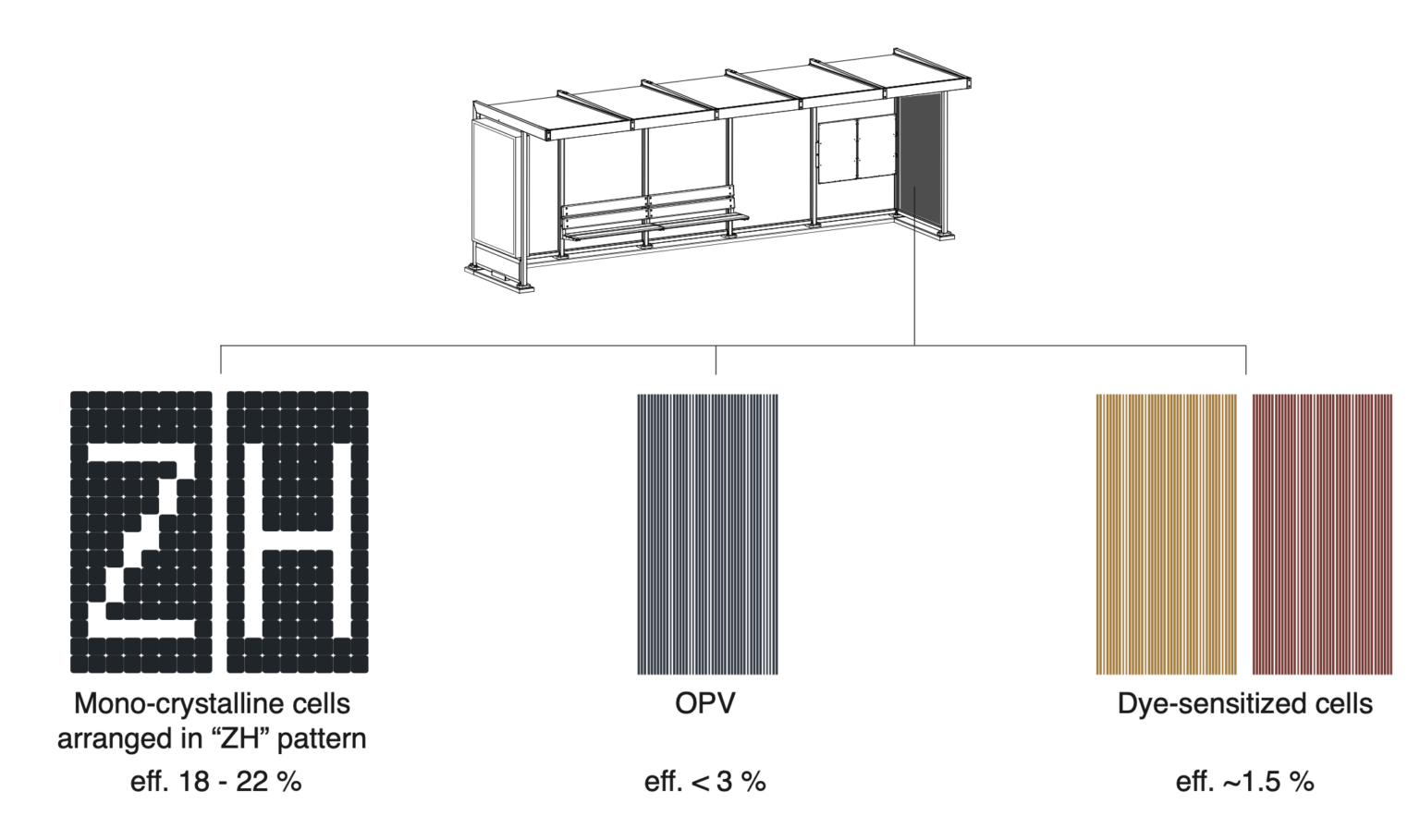
Parking Lots
In terms of integrating photovoltaic (PV) systems, parking lots are a particularly suitable urban structure due to their functional nature and mineral space. The possibility of implementing a roof structure with PV is easily accepted in these areas. Furthermore, with the increasing number of electric vehicles and the development of vehicle-to-grid (V2G) technology, synergies can be achieved by combining and optimizing electricity production, consumption, and storage. A graph illustrating the solar potential of a 17,000 m2 roof structure built over the P+R located in Werdhölzli is presented below. In this case, electricity production is combined with the consumption of the tram and bus network. The peak of solar energy production is stored in electric vehicles and returned to the network when the demand exceeds the production.
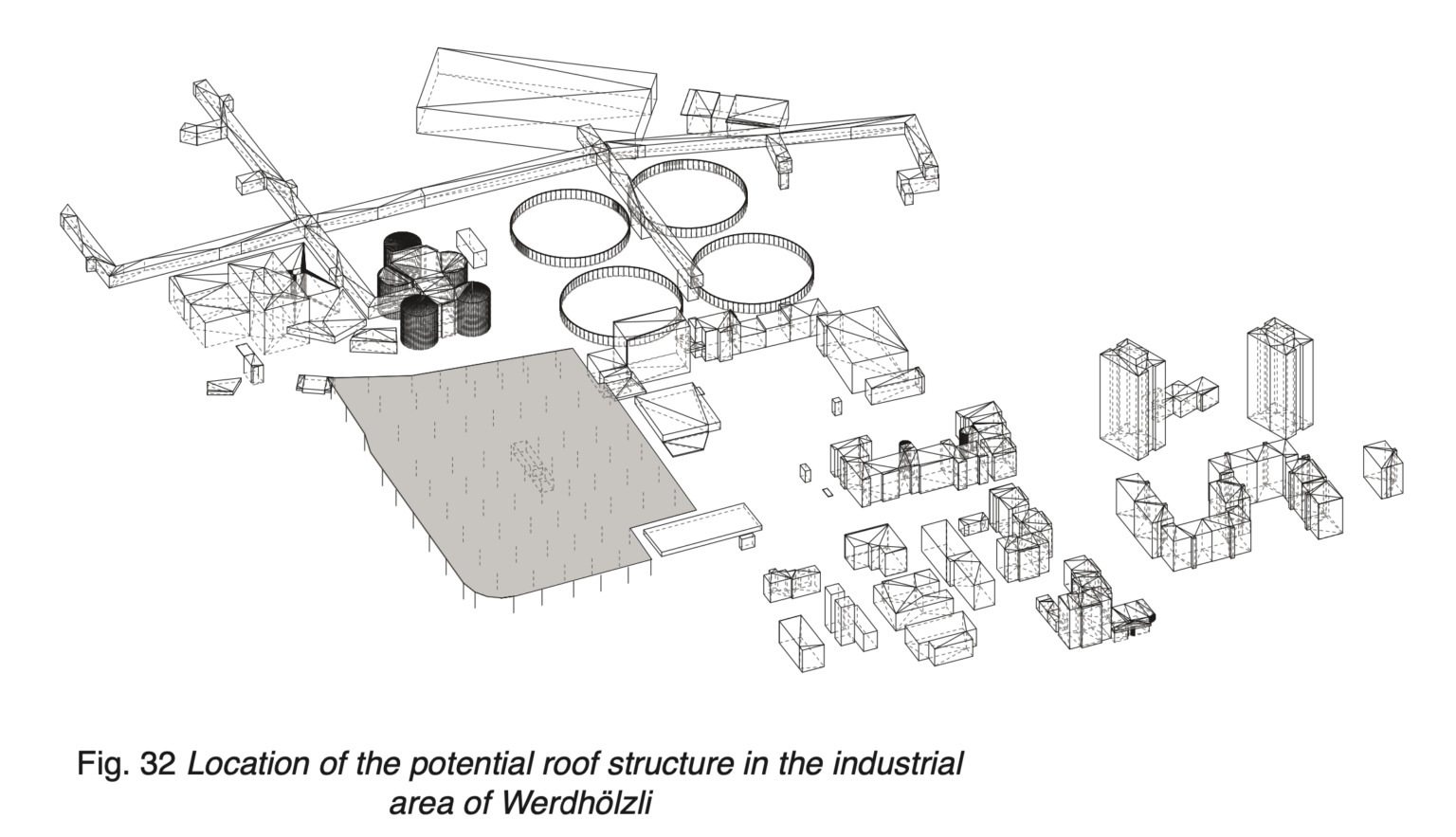
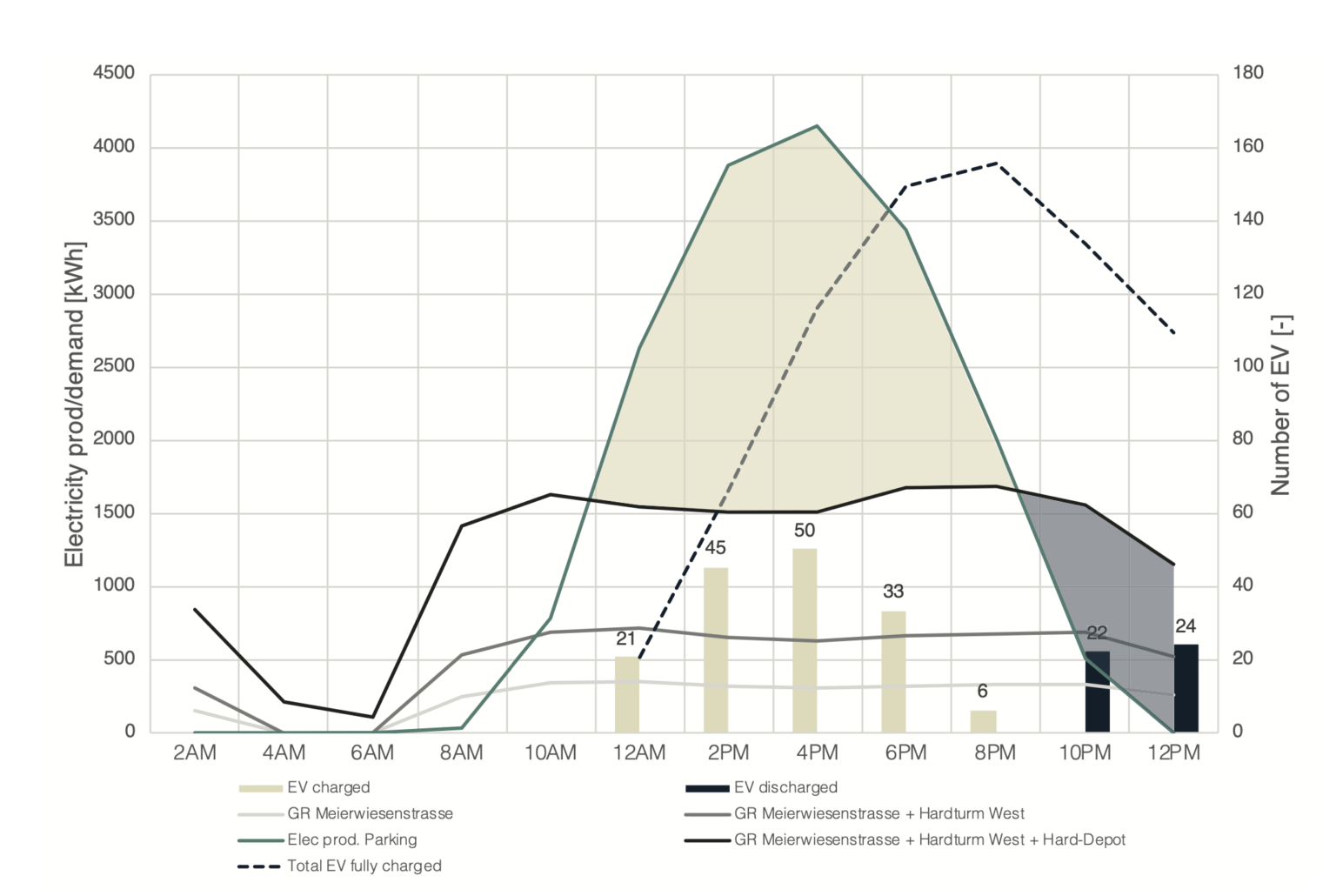
Plazas
Plazas, which are mainly composed of mineral ground and frequently located in city centers, provide an open space with favorable solar conditions for producing photovoltaic (PV) electricity. However, the building context of plazas is often determined by cultural heritage and therefore highly sensitive to any architectural or visual alterations. To mitigate the urban heat island effect in these areas, the use of a PV canopy is proposed as a co-benefit. Indeed, studies have shown that a PV canopy over a pavement surface can reduce surface temperature more effectively than urban forestry. To maintain the architectural atmosphere of the context, a light semi-permanent structure is suggested for the installation of the PV canopy. For larger areas, such as Sechseläutenplatz, such a structure could even enhance the cultural and social experience of these spaces by providing shaded areas (see figures below).
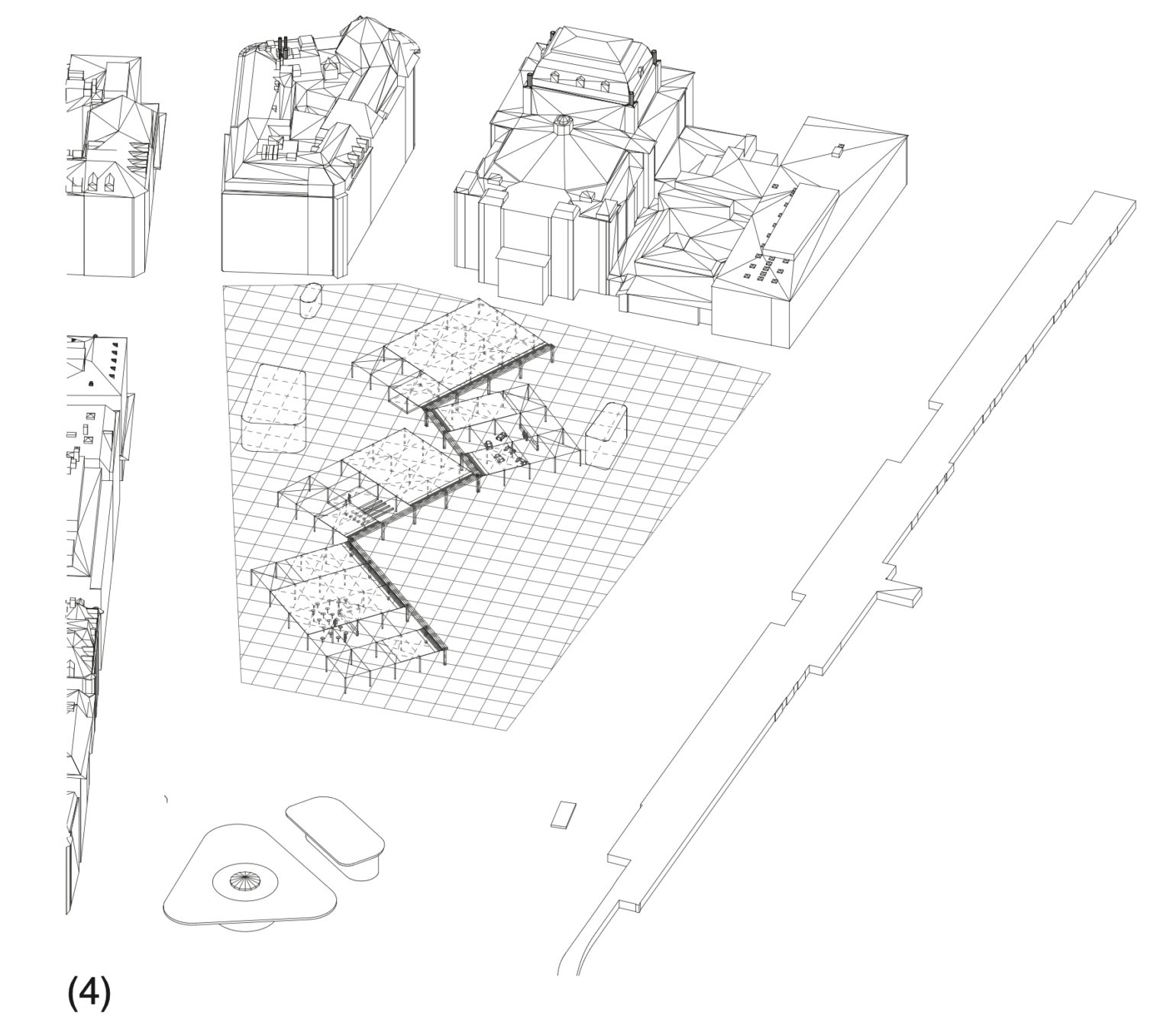
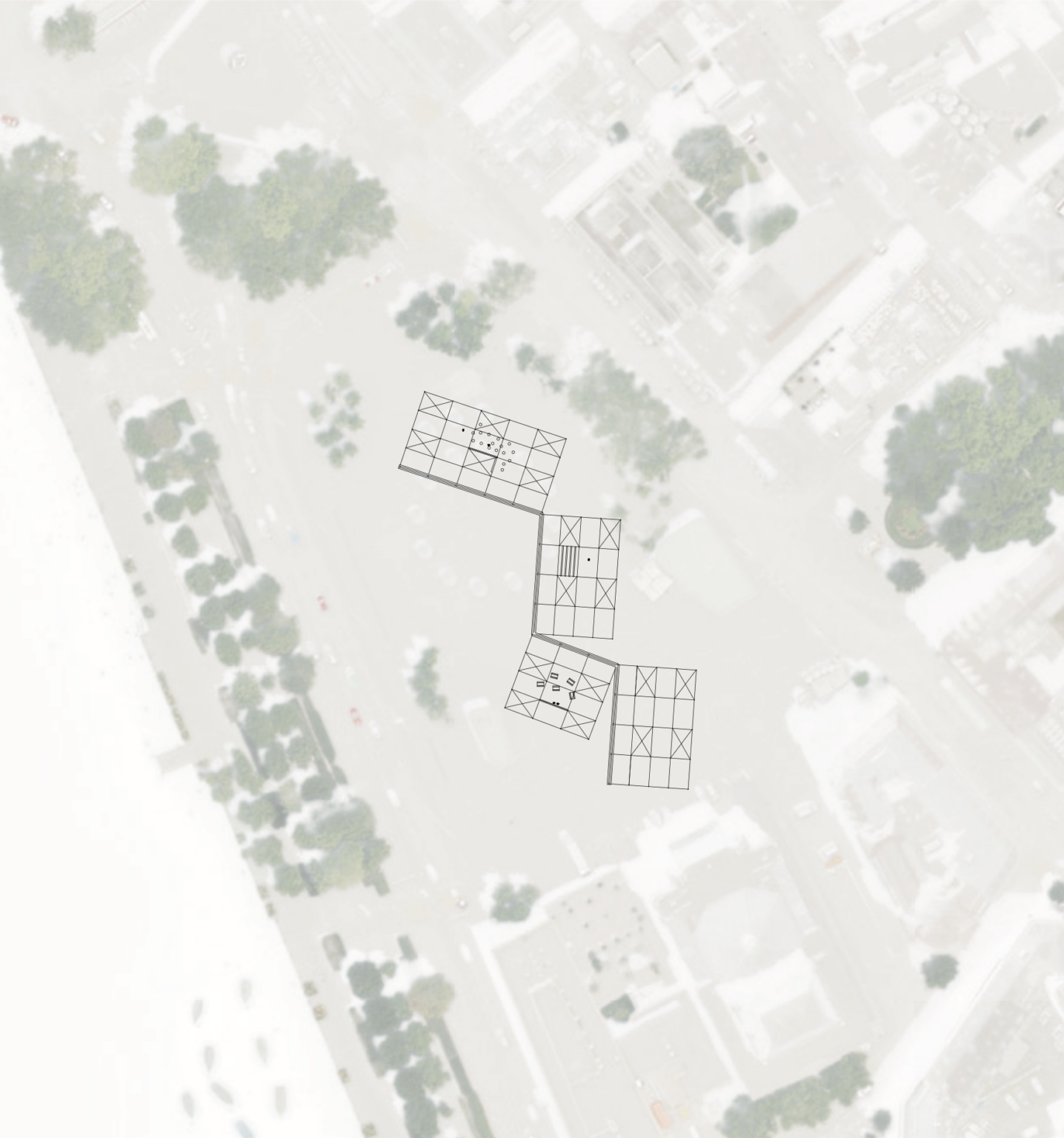
Bridges
The potential for solar energy production on bridges is significant, as they offer unobstructed exposure to sunlight without the shading effects of urban structures. However, the installation of photovoltaic panels on bridges requires careful planning due to the absence of supporting structures. Due to the proximity to a transportation axis the safety issues make the construction of such a structure more complex than elsewhere. Two approaches are considered:: vertical wall installation on the sides of the bridge or horizontal installation to create a canopy over the bridge. In comparison to other urban objects, the surfaces available for PV panel installation on bridges are much larger and thus visible. Consequently, the planning of a canopy system necessitates a focus on both design and construction aspects. For instance, the Europabrücke bridge, situated in the Zürich Altstetten region, is presented in Figure 1 as a demonstration.
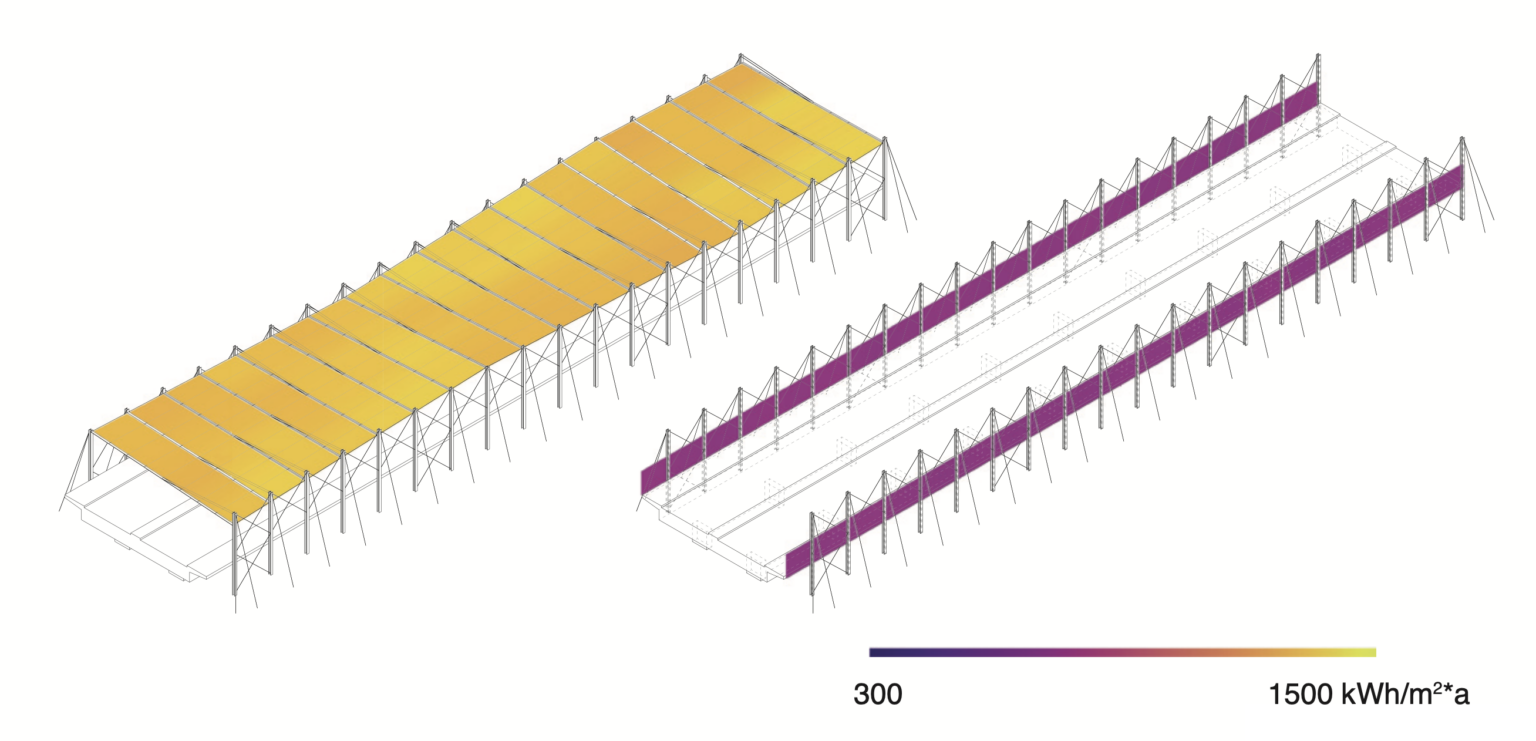
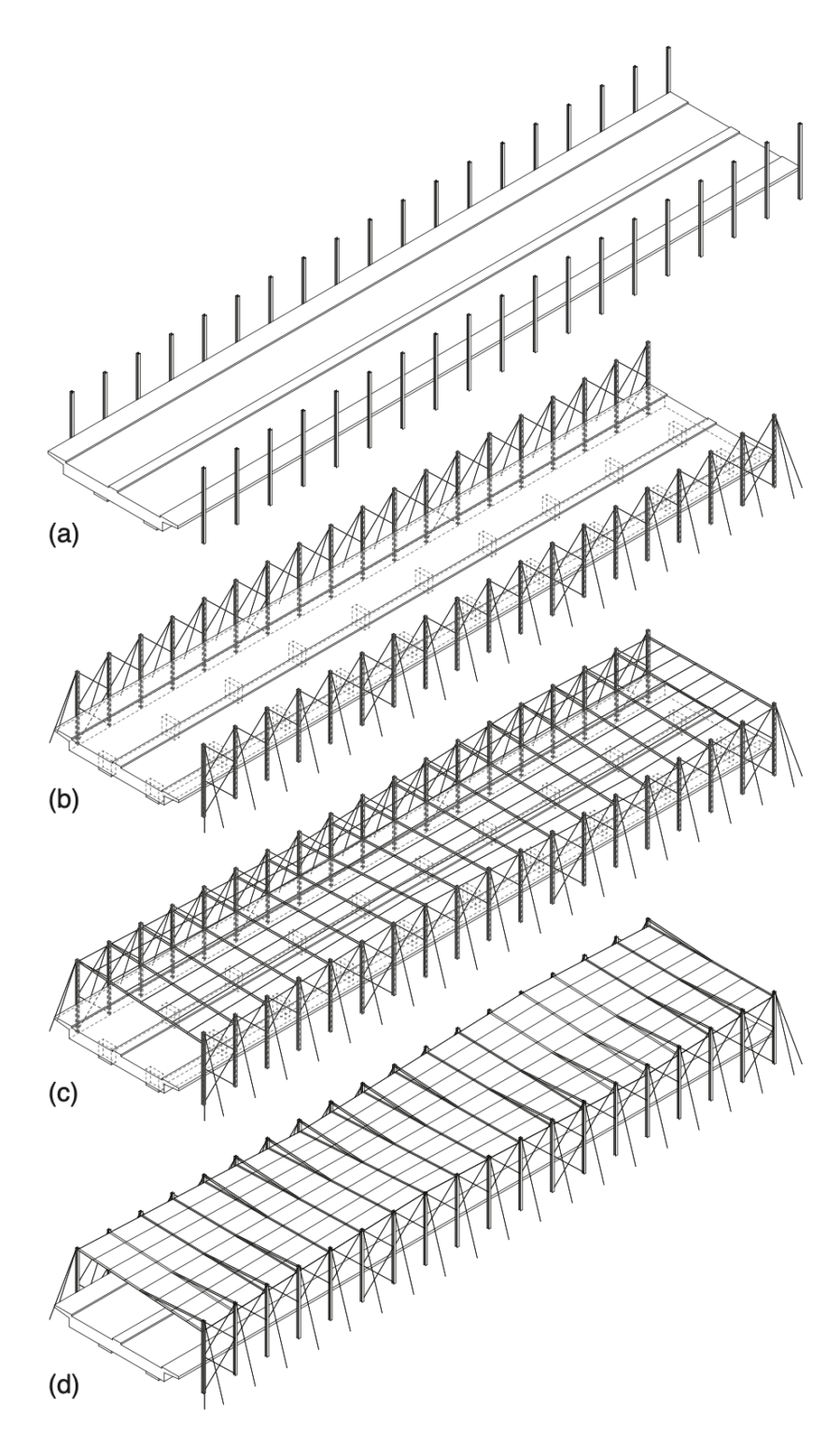
Take-aways
In conclusion, the interest of stakeholders in utilizing Urban Integrated Photovoltaics (UIPV) is high, although there is a lack of interdisciplinary expertise in combining architecture, engineering, urban and social aspects for successful integration. Pilot and research projects are recommended to address this challenge. Similar to the implementation of Building Integrated Photovoltaics (BIPV), the successful integration of UIPV requires clear roles and responsibilities among stakeholders.
Based on the assessment, car parks are deemed the most feasible option for installing UIPV, as they provide a suitable surface for PV installation while reducing urban heat island effect and potentially utilizing cars as batteries. Bus shelters, although small in scale, can serve as a valuable opportunity for raising awareness and promoting the technology among occupants. Ultimately, UIPV can complement existing PV solutions, such as BIPV or free-standing PV, by producing electricity where it is consumed and visible.
Cover image : “Energy transition in Croatia: five examples of good practice.” https://balkangreenenergynews.com/energy-transi- tion-in-croatia-five-examples-of-good-practice/ (accessed May 02, 2022).
Keep up with the Energy Blog @ ETH Zurich on Twitter @eth_energy_blog.
Suggested citation: Gester, Maximilian. “Ever wondered what urban integrated photovoltaics could mean for spaces and infrastructure in Zurich?”, Energy Blog @ ETH Zurich, ETH Zurich, April 4, 2023, https://blogt.ethz.ch/energy/urban-integrated-pv/
If you are part of ETH Zurich, we invite you to contribute with your findings and your opinions to make this space a dynamic and relevant outlet for energy insights and debates. Find out how you can contribute and contact the editorial team here to pitch an article idea!
